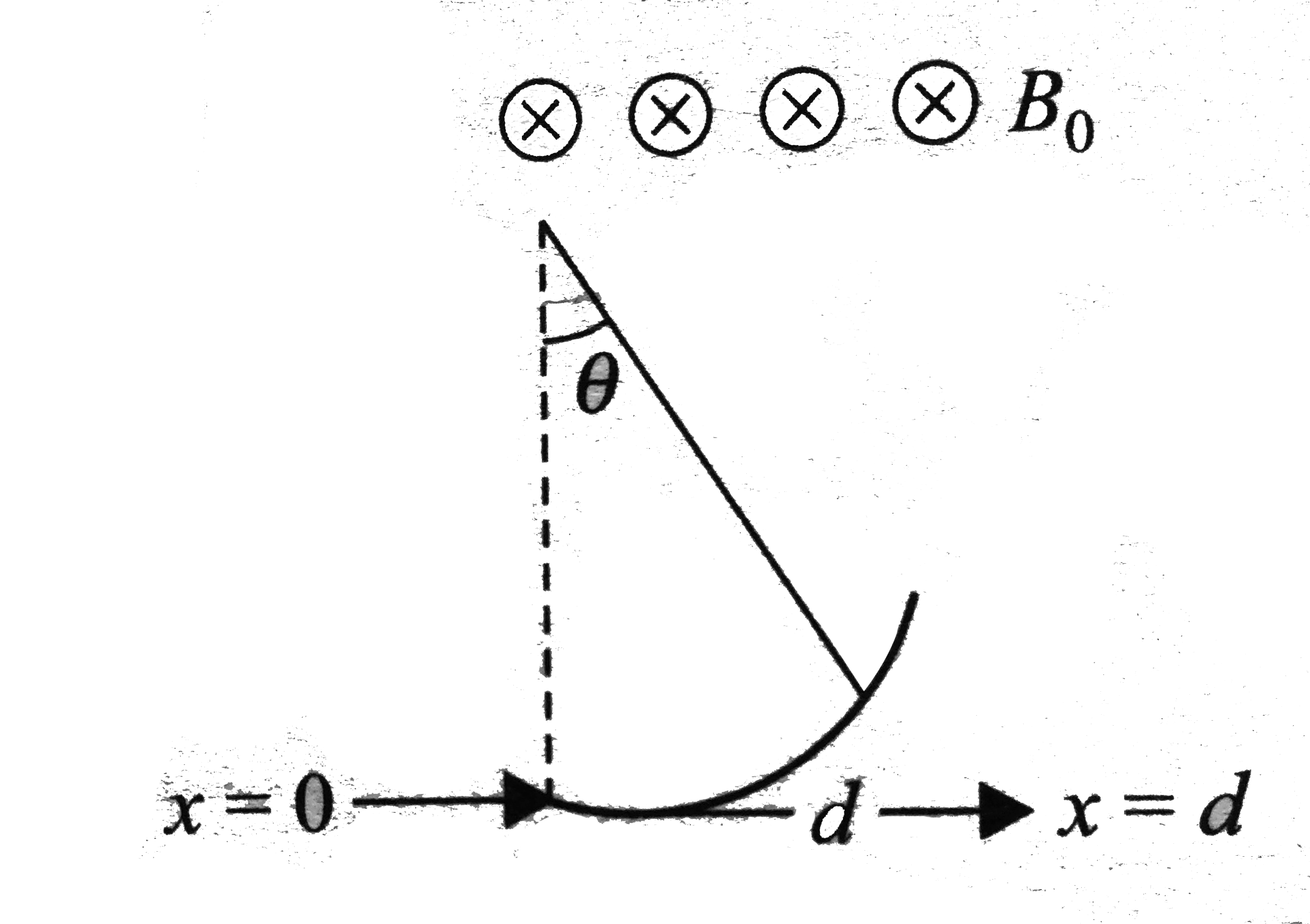A charged particle would continue to move with a constant velocity in a region wherein,
E=0,B≠0
E≠0,B≠0
E≠0,B=0
E=0,B=0.
The correct Answer is:a, b, d
A charged particle q will experience an electric force in an electric field →E given by:
→FE=q→E
Also, if u is the velocity of particle, the magnetic force acting on the particle due to external magnetic field →M is given by:
→FM=q(→v×→B)=qvBsinθ
Where θ is the angle between velocity of the charged particle →v and external magnetic field →B.
Even if →B is not zero and θ=0∘ or 180∘ ,
→FM=0
This implies the charge will continue to move with constant velocity if only E=0 .
So, options (a), (b) and (d) are correct.
Topper's Solved these Questions
- MOVING CHARGES AND MAGNETISMBOOK - MODERN PUBLICATIONCHAPTER - MOVING CHARGES AND MAGNETISMEXERCISE - NCERT (Exemplar Problems ) (Very Short Answer Type Questions )
5 Videos
- MOVING CHARGES AND MAGNETISMBOOK - MODERN PUBLICATIONCHAPTER - MOVING CHARGES AND MAGNETISMEXERCISE - NCERT (Exemplar Problems ) (Short Answer Type Questions )
6 Videos
- MOVING CHARGES AND MAGNETISMBOOK - MODERN PUBLICATIONCHAPTER - MOVING CHARGES AND MAGNETISMEXERCISE - NCERT (Exemplar Problems ) Objective Questions (MCQ Type - I)
6 Videos
- MAGNETISM AND MATTERBOOK - MODERN PUBLICATIONCHAPTER - MAGNETISM AND MATTEREXERCISE - CHAPTER PRACTICE TEST FOR BOARD EXAMINATION
16 Videos
- NUCLEIBOOK - MODERN PUBLICATIONCHAPTER - NUCLEIEXERCISE - CHAPTER PRACTICE TEST FOR BOARD EXAMINATION
15 Videos
Similar Questions
Consider a charged particle moving with constant velocity inside a region of space where electric and magnetic field both are present. How can the fields and velocity be directed to achieve this state?
View SolutionA charged particle moving with a uniform velocity →v enters a region where uniform electric and magnetic fields →E and →B are present. It passes through the region without any change in its velocity. What can we conclude about the (i) relative direction of →E, →V and →B? (ii) magnetic of →E and →B?
or
Find the condition under which the charged particle moving with different speeds in the presence of electric and magnetic field vectors can be used to select charged particles of a particular speeds.
View Solution
Knowledge Check
A charged particle continues to move with constant velocity in a region, where
E=0,B≠0
Ene0,B=0
Ene0,B=0
E=0,B=0 .correct option areAI,II and IIIBI,II and IVCII,III and IVDI,III and IVA charged particle moving along +ve x-direction with a velocity v enters a region where there is a uniform magnetic field B0(−ˆk),omx=0→x=d. The particle gets deflected at an angle θ from its initial path. The specific charge of the particle is
 AvcosθBdBvtanθBdCvBdDvsinθBd
AvcosθBdBvtanθBdCvBdDvsinθBdA particle moves with constant angular velocity in a circle. During the motion its
AEnergy is conservedBMomentum is conservedCEnergy and momentum both are conservedDNone of the above is conserved
If a particle is moving with a constant velocity, what is its acceleration?
View SolutionShow that the angular momentum about any point of a single particle moving with constant velocity remains constant throughout the motion.
View SolutionA particle moves with a uniform velocity.
View SolutionA charged particle is moving with velocity Vin magnetic field
View SolutionAssertion: In successive time intervals if the average velocities of a particle are equal then the particle must be moving with constant velocity.
Reason: When a particle moves with uniform velocity, its displacement always increases with time.
View Solution
